Your website is often the first point of contact for potential customers. The statistics vary, but it is generally agreed that most users decide to leave or stay on a website within the first 10 to 30 seconds. Investing in website localization and having a multilingual user interface that makes it easy for new visitors to quickly navigate through your website in their native language will increase the likelihood of engagement.
Have a specific question about Website Localization? Navigate directly to the section:
- An Introduction: Why Website Localization Matters
- Localization Preparation: Building the Framework
- Translation Process: The Heart of Your Website Localization Efforts
- Cultural Adaptation to Maximize User Experience
- Testing: Make Sure Your Hard Work is Going to Pay Off – Before Your Customer Even Sees It
- Seek Inspiration from Others: Three Examples to Inspire Your Localization
- Time to Localize? You’re Not in this Alone
[form_newsletter]
1. An Introduction: Why Website Localization Matters
According to a 2020 study by Common Sense Advisory, 76 percent of those surveyed prefer products with information in their own language, and a full 40 percent of those surveyed said they would only purchase a product online if the website contains information in their native language.
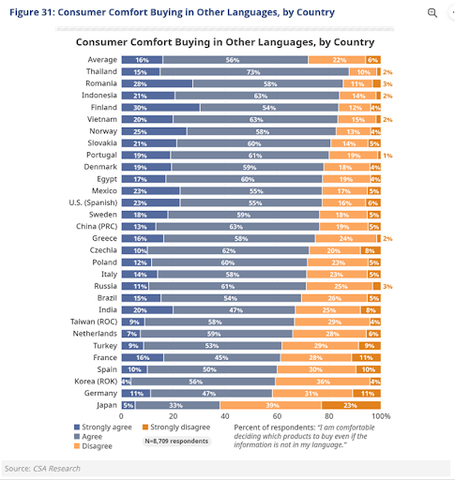
These findings are even more astounding when you consider the countries surveyed: Japan, Germany, and France, among others. They are highly developed nations that have English language learning integrated into their educational systems.
Following website localization best practices as part of your global marketing initiatives can mean the difference between a bounce or initial buy-in that leads to a sales conversion.
In an ideal world, website localization offers a seamless experience. Users should not even be aware that the page that they are on has been translated from another language. Making that happen is no easy task, but here’s a framework to help make it possible – we’ve even included a few examples showing how some of the world’s most trusted brands have pulled it off.
2. Localization Preparation: Building the Framework
“An ounce of prevention is worth a pound of cure.”
Benjamin Franklin
As one of America’s founding fathers and most renowned statesmen, Benjamin Franklin understood a forward-looking vision and planning was the best way to prevent later crises.
The same rings true as you begin expanding into the global marketplace and contemplate how to localize a website for maximum impact. You can prevent problems before they hamper results with 4 key localization planning steps.
Market Research: A Road Map for the New Territory
Companies engaged in global marketing must first define their target markets. Not every company has the time or budget for this task, but it can provide invaluable insights. Once this market analysis has been done, local research will help to verify a brand’s business opportunities, understand consumer habits, and appropriate cultural messaging.
One way companies can accomplish this is through the development of user or buyer personas that classify and segment the market. These personas give you a “virtual customer” to anticipate challenges and communication opportunities against so you can tailor messaging while you are still in the planning stages – instead of performing expensive mid-course corrections.

Translation-friendly Content Management System (CMS): No more “Lost in Translation”
A CMS can effectively streamline your professional website translation process, but keep in mind not all CMS are created equal.
First, a good CMS must support all target market languages. Additionally, it should be flexible enough to translate source content from different languages. The most important aspects are Application Programming Interface (API) capability and translation management functionality.
A CMS with a translation focused API will enable the pushing and pulling of content to your translation agency’s translation management system (TMS). A translation friendly CMS eliminates the need to manually copy and paste text or files between systems and reduces the chance of missing translation content.
Dynamic Layout: Go with the Flow for Better Localized User Experience (UX)
It’s obvious that a website internationalization has been poorly done when the text does not fit well on the page. If the localized text in menus or on the call-to-action buttons goes over the edges or has margins that are too tight, your site looks unprofessional and sloppy. Poor website presentation after localization can immediately make a new user lose trust in your brand.
A flexible website design that adapts along with the translation will solve UX problems before they arise.
Scaling Text Size for Legibility in Any Language
One of the most obvious design localization challenges is the readability of words and phrases across languages. Legibility is as important in any translated language as it is in English – especially with so many people accessing web content on a myriad of devices and screen sizes.
Your website design should allow expansion of text after it has been localized into different languages. Consider this:
- During translation, text length can fluctuate by as much as 40 to 100 percent and affect the look of the web interface dramatically – what may have had a pleasant appearance before may look confusing after the website text has been translated.
- Words in certain languages, for example, German, tend to be much longer. If this extra length is not accounted for, it will likely cause unexpected breaks in the text which can result in the corruption of the layout.
- Certain acronyms or initialisms do not exist in other languages and are written out in full form. If spacing of an element on your site is based around an acronym, this will have to be resized after language translation.
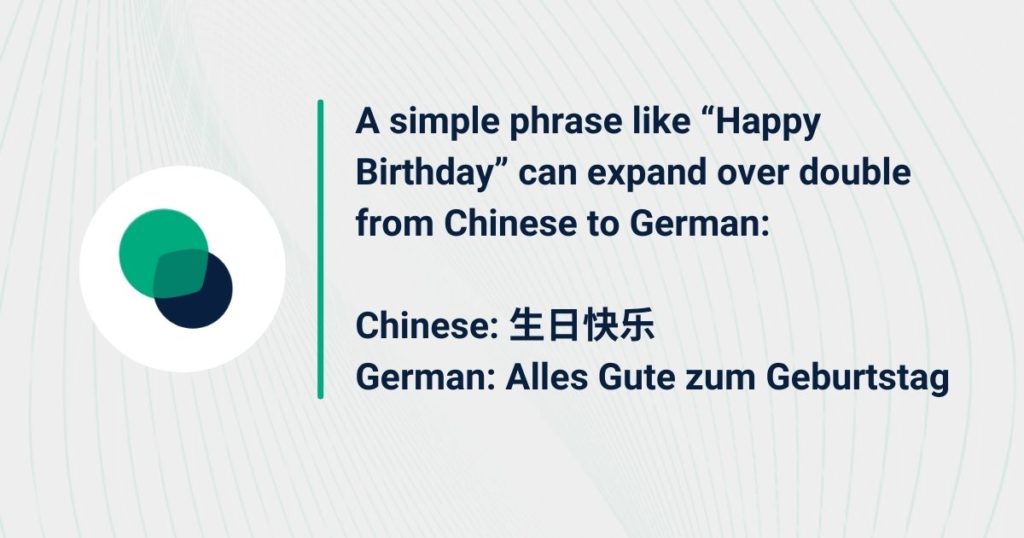
Anticipating Character Set Challenges Before They Cost You Layout Clarity
A character set is the digitally displayed representation of a language using symbols, ideograms, letters, or other elements of that language’s script.
For example, English uses the Latin Alphabet, Chinese uses logograms, and ancient civilizations often used pictograms. Not all scripts read from left to right, as is the case with the Latin-derived English language scripts. Arabic, Hebrew, Farsi, and Urdu scripts run from right to left, while some Asian languages such as Chinese and Japanese often run from top to bottom.
This difference can turn a well-presented web interface into a puzzle when it is translated from one character set to another. The trick here is not to work retroactively attempting to adapt the layout, but to incorporate localization into the initial design of the interface. Time spent thinking about global considerations will protect the integrity of a well-designed interface during the localization process.
Proper Character Encoding: Serve Up Your Brand Promise, Hold the “Tofu”
Another tell-tale sign of a badly localized site is the presence of meaningless characters where there should be text. You might see empty boxes referred to as “Tofu”, several question marks or just a bunch of random characters in your text.
In fact, corrupt characters have happened so often for website localization from English to Japanese that there is a Japanese word for it. A random set of inserted characters called “mojibake” 文字化け translates to “garbled characters” or more literally “transformed characters”.
This happens when foreign characters are not supported, and confusing placeholders are inserted instead. These characters make the text look like it has been partially encrypted by some secret security organization and is not only visually distracting but it also makes your site illegible. You can avoid this problem by using proper UTF-8 declaration, fonts like Google’s Noto Sans, and Unicode encoding throughout your web stack.
Solve Formatting Inconsistencies Ahead of Time
Correct formatting in numbers, dates, postal codes, and sentence structure are important for functionality when processing data entered in forms, and effectively communicating information to the user.

When populating your user interface with text values stored in a database, it is important to think about the placement of the pulled data. For example, let’s say you built an HRIS web application and had a sentence saying, “You have 23 candidates to review for this position.” The number 23 would most likely need to be stored in and pulled from a database. This sentence structure works well in English, but not in other languages where the word order would change. Therefore, it is better to have a sentence structure that puts the database value at the end of the sentence: “Number of candidates to review for this position: 23.”
In addition, there are a wide variety of time, date, number, postal code, phone number and currency format options used around the world. Time is displayed in either a 12 or 24-hour format, and the date can be represented with either the day or the month preceding the year. Currency denominations are indicated with specific symbols and their values in thousands can be written with commas, spaces, or periods.
Without a coherent strategy for presenting and collecting such information across languages, misinterpretation is inevitable.
SEO Optimization: Lay the Groundwork for Standout Multilingual Results
Many companies put off international and multilingual SEO until localization is complete. This is a mistake – especially since 90% of searches are conducted in a user’s native language
By laying the groundwork for the SEO campaign during your website localization planning, you can keep budget in check and reduce ad hoc strategy re-works. From the start, each localized website should have tailored a SEO campaign that takes five local variables into consideration:
Technical Focus
Certain technical details will improve SEO. For example, a ccTLD or country code top-level domain (i.e. .uk, .de, etc.) most likely will improve Google search results for that specific country. Similarly, utilizing the rel=”canonical” link element will prevent Google penalties for duplicate content you might use across English websites for the US, the UK, Australia, and New Zealand. Also, adding hreflang attributes and markup to your sitemap tell Google which of your websites corresponds to which languages and countries.
Keyword Research
Even people with a common language tend to use different words to refer to the same thing. For example, a British English speaker may say he is taking a “holiday” or waiting in a “queue” while an American English speaker will say she is taking a “vacation” or waiting in “line”, respectively. The same principle applies to the way that people search for information on the internet.
Monitoring Search Engine Updates
Search engines constantly update their search results algorithms, so periodic SEO strategy updates are necessary to maintain ranking.
Attention to Different Search Engines
Believe it or not, some countries prefer search engines other than Google, like Baidu in China. Therefore, multilingual SEO will fail when developers fail to account for other popular search engines used globally and their algorithms.
Effectively integrating these 5 variables into your SEO strategy will help rank the site in search engine results pages (SERPS), while also helping search engines identify the site’s target audience. And remember, without an SEO campaign, few websites reach their full potential.
If it’s worth investing in website localization to reach a target audience, it’s also worth promoting that website through multilingual SEO.
3. Translation Process: The Heart of Your Website Localization Efforts
After the foundation for your localization efforts has been built, it’s time to get into the real heart of communicating with your customer – translating your content into their native language.
Just like with all stages of localization, a small addition of planning and pre-work will yield far stronger results from your professional website translation.
Localization Engineering/Pseudolocalization: Extracting Your Content to Get Translation Right the First Time
Sometimes, portions of web content don’t get translated by the Translation Service Provider (TSP) because marketers or developers fail to submit it. This often happens with file types other than HTML, like PHP or JavaScript.
Pseudolocalization is a process that uses visual cues to accurately extract all the text from your website for translation and package it to be sent to a translator. During this process, an easily recognizable, but not widely supported character is inserted before and after the text strings on your website.
Asian characters are commonly used for pseudolocalization in the US. By viewing all the content on your website, you can confirm that all the text has been tagged.
Visually checking the website for content that lacks these added characters may seem like a mundane task, but it is definitely worth the time as it ensures all content for your website’s internationalization efforts are submitted for translation the first time.
Beyond the First Pass: A Deeper Dive into Translating all the Content on Your Site
With the complexity of site architecture and the passage of time it’s easy to forget the myriad of “evergreen” support materials you’ve developed to make your brand a stand-out in your local market. But a thorough review reveals a plethora of overlooked opportunities where translation can boost sales.
Video Voiceovers and Subtitles
Video is a popular and effective marketing tool all over the world. Making your videos accessible to your global customer base requires translation of the transcript and any text displayed on the screen. If your videos also include spoken language, voice over enhances the user’s experience and increases your chances that they will stay engaged.

Consider Decoupling Images from Text
While images with headline text inside them are visually impactful, they generally require extra effort to get the text translated and formatted in a way that looks correct within the image.
You can avoid this by not embedding text in images or using SVG files for your graphics. SVGs support text that is editable, easily localized / translated and indexable for SEO purposes.
If the visual impact is just too good to lose, you can also put the text you want translated in an Excel sheet for the translator then edit the image yourself to cut costs.
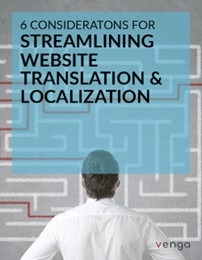
Text separated from image for easy translation:

racionalizar la traducción y
localización de páginas web
Don’t Forget the Technical Reference Library
If you have published white papers, case studies, or infographics on your website, taking the time to translate these assets will help you reach more people in your global target markets. Because localized text is often of different sizes, different lengths, or sometimes read in a different direction, these documents must not only be translated but also reformatted to look professional and match the source.
Glossary Development: The Key to Making You Sound Like You Across Every Language
Every company uses a company or industry-specific terminology and terms that identify the brand. These terms should be compiled in a translation glossary that establishes a company’s preferred translations for these key terms. This tool will help protect the company’s brand, and it will enable translators to be consistent while also working faster. A glossary is a great tool to help you save time and money in your localization efforts.
Translation Pricing Considerations: What Matters When It Comes to Matters of Cost
There are many factors that contribute to translation cost, but translator scarcity and web content transfer methods are two of the largest.
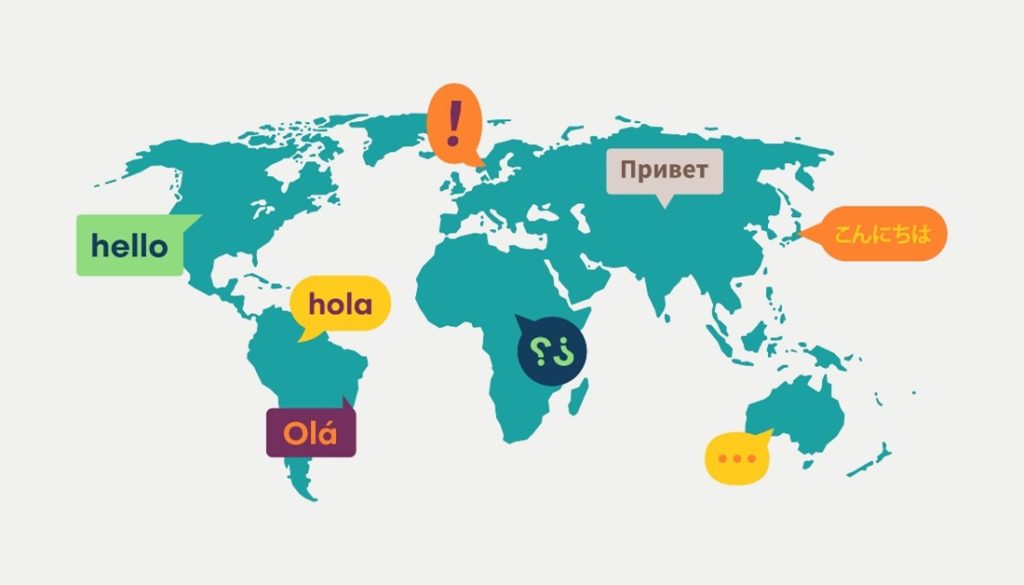
Translation Scarcity Explained
If your target language is common in your base location, your translation will often cost less. For example, in the US, Spanish and Chinese will most likely be the least expensive languages. There are many translators in the US who work in these languages, so you will have a bigger pool for top translation quality. Other languages, like Swedish or Finnish, are much less common in the US and so more expensive.
Language + Technical Language Skills
The type of material also matters. If the material requires specialized language (technical documents, marketing material, etc.), you will need translation specialists in these subjects.
Internal vs. External Audience Considerations
Is your page outward or inward facing? If you need content for within your company, you may decide to leave out the review by a subject matter expert. On the other hand, if clients are going to be reading the text, you’ll want top-quality and should be willing to budget for it.
A good translator is key. You may pay more for someone who has a proven track record for quality and timeliness, but you’ll find it worth the price in the long run.
Web Content Transfer: Time = Money
How will you deliver your content to the translation agency? You can certainly complete this process yourself through copying and pasting. However, this method is often error-prone and time-intensive. Your translation agency can help you cut down the hassle through a couple of methods such as:
- Automatic file transfer systems like WebToGlobal that pull the text from your website quickly and cleanly.
- Use of a content management system (CMS) such as Ingeniux. Some agencies have partnerships that make the transfer of content completely painless.
- Translation modules that work with your API and allow you to pull the content you want.
Remember to ask your translation agency what file transfer options they have and how they will affect your costs.
4. Cultural Adaptation to Maximize User Experience
Many people do not realize that website localization (L10n) goes beyond a simple translation of text from one language to another. Not only do words change from one culture to another, but phrases, symbols, gestures, and general communication styles change as well. Sometimes these differences cause unexpected misunderstandings which range from the comical to the offensive and embarrassing.
Localizing Visual Impact: Meaning that Goes Beyond Words
Icons to Avoid
When planning to localize a website, there are certain icons that should be avoided. Many of these can be identified by simple categories. One category includes animals which carry a wide range of symbolism. For instance, one culture may regard a dog as a symbol of loyalty while another would see it as something low and dirty.
![]()
Universal Symbols
There are many symbols that are universally recognizable like the magnifying glass, an X, gears, and arrows to name a few. These have been tested and proven so that companies don’t need to retest what already works. In fact, some standardized databases exist for particular industries like transportation and medicine.
At other times, a symbol may not be universally known, but its meaning may be intuitive or easily learned. Pairing icons with labels can help to further guide the reader. Nevertheless, it is important to verify any cultural meaning behind symbols for your target markets before using them. This will prevent unintended communication, and it will ensure that symbols are actually intuitive to others as well.
Culturally Relevant Photography
As the visual content on websites increases, its cultural relevance is becoming increasingly important. To maintain a professional image, companies must, at the least, review their website’s images for offensive content. What is acceptable in the United States may not be in another market. The use of culturally relevant images extends beyond simply avoiding offensive ones, though.
Images present a secondary means of connecting with a site’s audience. Images that relate to a target audience’s culture give the audience confidence in a site. Pictures from their country and area will go a long way with a target audience, especially if the people in the photographs look like the visitors. Just as English text needs to be translated when localizing a site, pictures of Anglos should be adapted to depict the people the localized site is targeting.
Localized Social Media
Social media is, first and foremost, social. Therefore, it differs from culture to culture. In the U.S., Facebook and Instagram dominate social media, and other outlets, such as Twitter, Pinterest, TikTok, and LinkedIn are also commonly used.
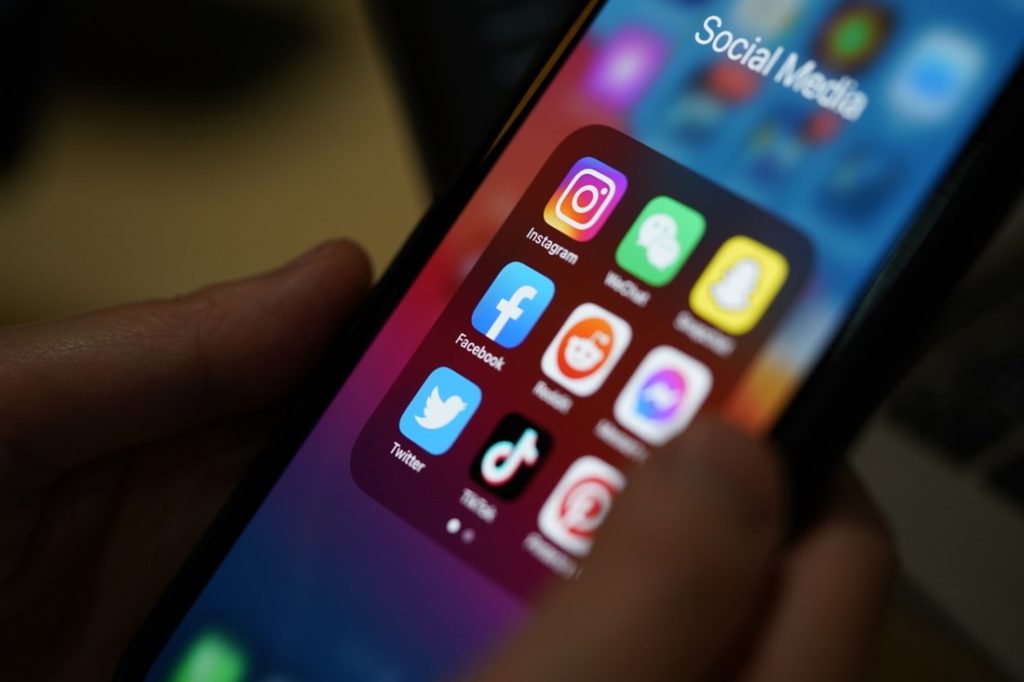
In other countries, different social media outlets may dominate the scene. Localizing social media for a targeted website will create a natural way for people to share the site with their family and friends. Depending on the nature of the localized site, this may simply mean using different sharing icons or it could require creating pages and campaigns directly on the various social media platforms.
Local language Selection: Empowered Customers Are Loyal Customers
If you’ve already invested in a CMS that allows a fully localized experience across countries, you can also put the viewer in control of their options.
Why not let new users select their language – and break it down by type? Remember that even countries that have the same primary language do not necessarily share the same linguistic nuances.
For example, the differences between British and American English or the Portuguese spoken in Brazil and Portugal are notable, especially to the native speakers in those countries.
Spell Out the Choice in Their Own Language
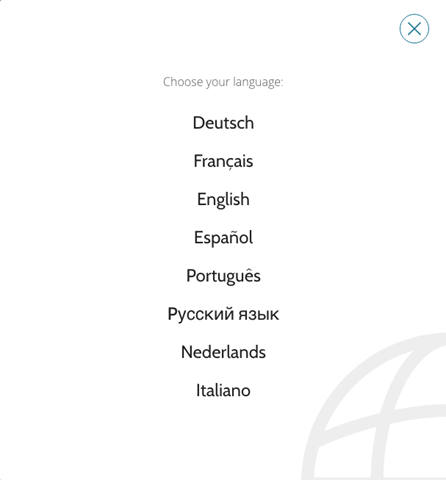
Give users the option to select their language typewritten in their language as well. As a native English speaker, you wouldn’t want to go to a Japanese site and see 英語 instead of “English” as an option in the language dropdown. In the same way a Japanese person prefers to come to your site and see 日本語 as opposed to “Japanese” written out in English.
Minimize Selection Effort to Maximize Browse Time
People may arrive at different pages of your localized website that do cater to their needs, but very often, organizations send site visitors back to the home page after they select a different language in the language dropdown.
Users then lose patience and generally do not want to try to figure out how to navigate back to the localized version of the page they were on. If you minimize this site navigation you can increase your conversions globally.
Language Detection, Cookies, Local Storage, and User Profiles: The Case for World-class Courtesy
Wouldn’t it be nice if anytime you went to a site, it was already showing you the website content in your desired language version? This is possible today. There are tools to detect the language of the user’s browser, then serve up the website in that language or ask them to confirm their language preference.
After a new user has selected their language preference, it can be stored in a user profile, with cookies (restricted in many EU countries without notification or other considerations), or with HTML local storage.
Presenting your website in a visitor’s native language automatically improves your visitors’ experience and increases your sales – and isn’t that the point of website localization to begin with?
Global Marketing Considerations: Messaging with (Proper) Impact in Mind
Certain slogans or taglines simply do not work when translated literally. A website localization service provider can help you decide the best way to convey your message to your global audience without inadvertently being culturally offensive or ridiculous. For example, Swedish vacuum manufacturer Electrolux didn’t understand the American slang implications of its slogan, “Nothing sucks like an Electrolux,” and the brand suffered as a result.
Choosing a partner who understands the local language and culture can save you from a similar mistake.
5. Testing: Make Sure Your Hard Work is Going to Pay Off – Before Your Customer Even Sees It
Before launching a localized website, it should be tested for both functionality and linguistic accuracy. The tester will look for potential problems such as text not fitting into menus, correct format of dates and times, and proper use of the language in context.
6. Seek Inspiration from Others: Three Examples to Inspire Your Localization
When venturing into new lands, it is always a wise idea to consult those who have already explored the area. For explorers of former eras, this required hours of consulting maps and talking to travelers. For businesses today, all that is needed is a quick visit to other companies’ translated websites. From these websites, you can learn what website localization best practices are working in a market. Here are three examples from ASOS, Apple, and Nescafé to get the exploration started.
ASOS: Customizing the Value Messaging Per Country
Just as Amazon and many other online retailers promote their domestic shipping deals to U.S. customers, shipping policies and prices also need to be clearly stated and customized on overseas versions of sites.
On the ASOS homepage, the company’s shipping deals are displayed in the top right. Depending on which country website customers are viewing, they will see a tailored message on the home page:
- “Free Delivery Worldwide” (UK)
- “Shipping to Collection Points” (France, translated)
- “Free Shipping and Free Shipping to the UK” (Germany, translated)
- “One-day Shipping for 15€” (Italy, translated)
- “Free Shipping on Orders Over $40” (Australia)
- “Free Shipping All Over Russia” (Russia, translated)
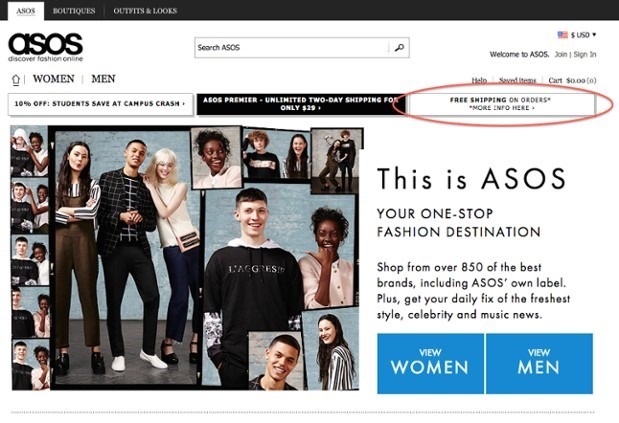
Apple: Broad Support Even for Multilingual Countries
Countries such as Belgium, Switzerland, India, and Canada have multiple, widely-spoken languages. To fully engage customers in this instance, companies must cater to speakers of all official and commonly used languages.
Apple does this as well. Apple’s “Choose Your Country or Region” page lists many countries, grouped by region. When appropriate, visitors may select between two different websites for a country. For instance, Canadians may choose between either an English or French version of the site, and Puerto Ricans can select between English and Spanish.
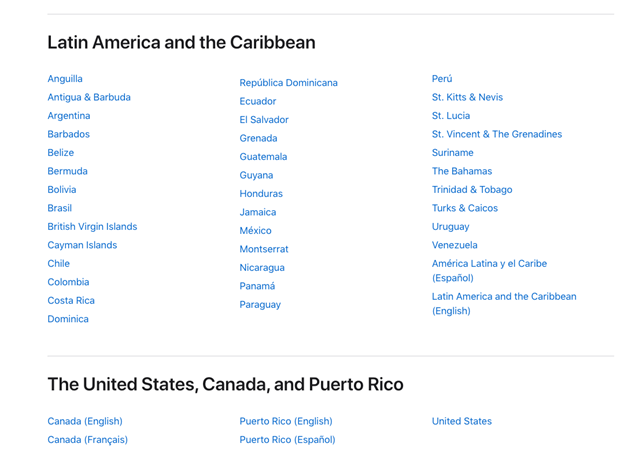
Nescafé: Localized Website Design
A homepage’s layout and imagery are critical elements in website design, and they can significantly affect how a brand is perceived in another country. One layout and brand design focus for one country might be better for marketing a product or service than another.
Few companies have as many different country-specific homepage layouts and brand designs as Nescafé. Analyzing the company’s homepage design for each country would require more space than this post allows, and probably a discussion with Nescafé’s marketing department. A brief look at some of the different webpages shows that the translation and localization teams at Nescafé have spent a lot of time on the basics, like homepage design.
Notice how the Italian page’s main element is video:
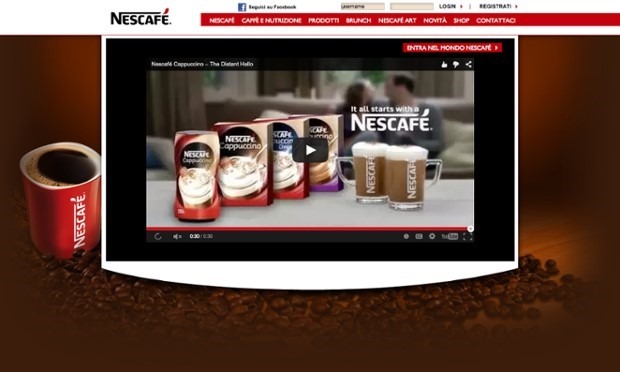
While the Japanese layout is very modular and uses the Nestle brand as opposed to Nescafe:
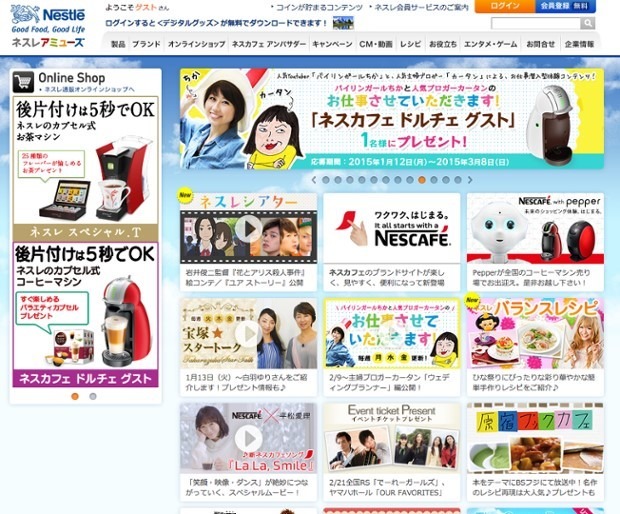
The French page has a rotating hero image and Dolce Gusto is added to the Nescafe brand name:
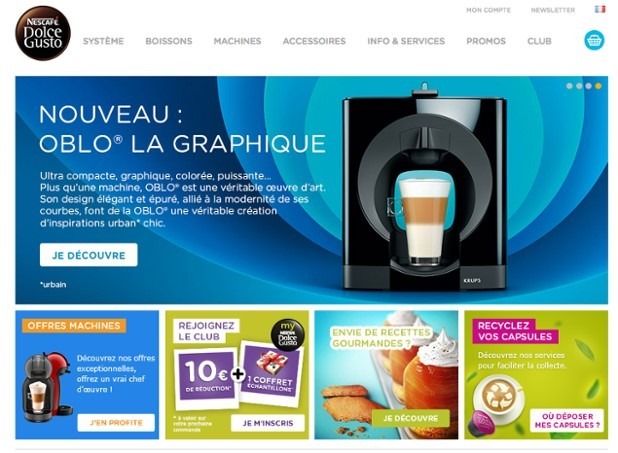
And lastly, the China homepage is a full-screen static image, with some English text and non-Chinese models:
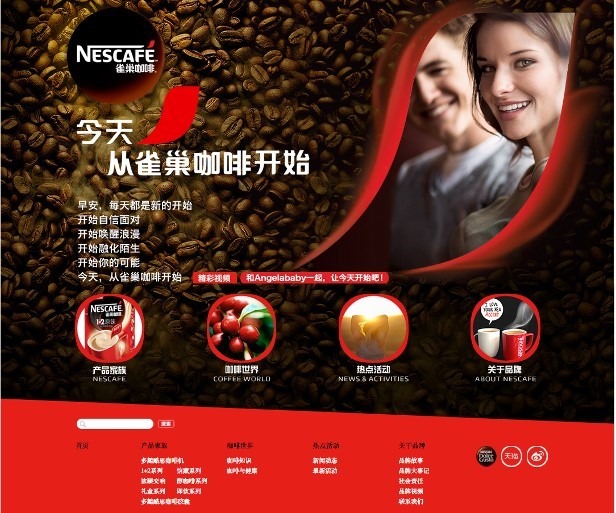
Scale Their Best Practices to Your Global Ambitions
While your business may have smaller budgets, these global corporations’ successes in translating and localizing their websites for new international markets can still be used to inspire and guide your company’s website translation and localization efforts.
7. Time to Localize? You’re Not in this Alone
Website localization requires many considerations on multiple levels. In addition to translation, you need to be sure that an end-user’s experience is a positive one, no matter where they are located. As the face of your business, high-quality website localization is essential if you want to succeed in the international marketplace.
Argos Multilingual can help you get there with a full suite of translation and website localization services as well as technology to streamline the process. Contact us today to learn more.
 Raffaele Pascale
8 min. read
Raffaele Pascale
8 min. read
Raffaele Pascale, Former Program Manager and LGBTQ+ Ambassador at Venga Global, An Argos Multilingual Company Of the 130 languages most commonly spoken globally, 55% have gendered grammar. This means that the languages assign gendered pronouns and endings to the words themselves, for example; l’acqua (“water,” Italian feminine) vs. il libro (“book,” Italian masculine). For the […]

 Kim Shouler
5 min. read
Kim Shouler
5 min. read
If you’ve worked in HR or have been through a recruitment process in the last five years, chances are you’ve come across a psychometric assessment of some sort. It’s said that 78% of recruiters consider psychometric assessments to be a powerful tool for hiring. A psychometric test is an assessment tool for gauging mental ability, […]








